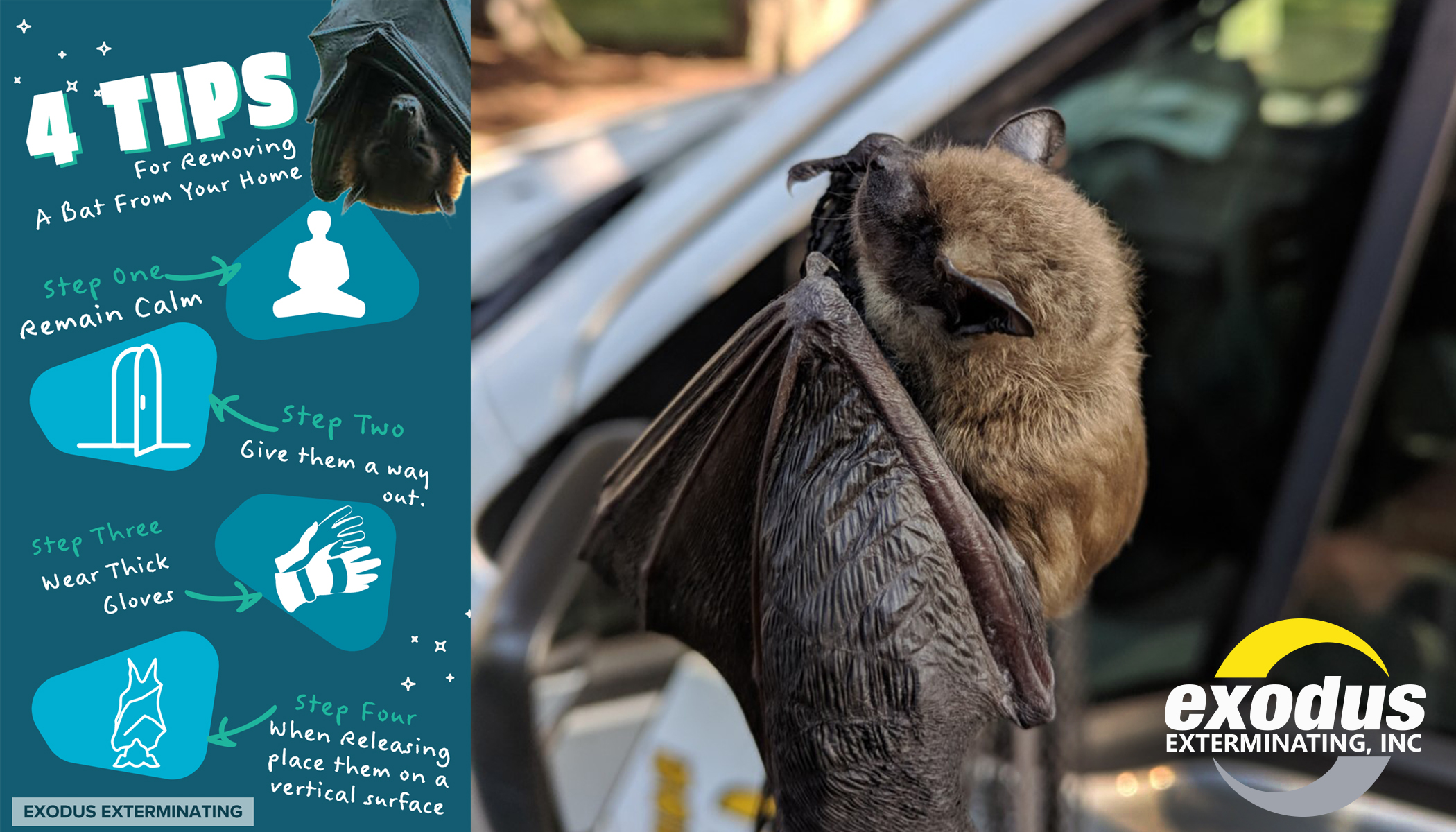There's a bat in my house!

by the Humane Society of the United States
No need to panic—you can remove him safely and humanely
Sometimes a bat may go off course and accidentally find their way into a home. This is no cause for alarm. Stay calm, and follow these steps to remove them safely and humanely.
The bat may be first seen flying around a room early in the evening, landing on curtains or furniture and then taking flight again.![]()
Remain calm and keep pets and children away. The bat will tend to fly in a U-shaped path, flying higher near the walls and lower in the center of the room, so keep near a wall.
Close interior doors and give the bat a way to get outside. If the bat doesn't exit on their own, it is best to wait until they land to try to catch them.
Important: Never try to handle a bat with your bare hands.
Wear thick leather or similar work gloves—not cotton. Most bats can easily bite through cotton. If gloves are not available, you can capture a bat in a rolled-up t-shirt or something of similar material. Make sure there is enough thickness to the material used so you will not be bitten. (Don't use a towel, as the bat’s claws might get snagged in its loops.)
Bats will most likely land somewhere they can hang—behind curtains or upholstered furniture, on hanging clothes, or in house plants. Carefully place a plastic tub or similar container over them. Gently work a piece of cardboard or stiff paper under the container, trapping the bat inside. Now you are ready to release the bat outdoors.
Because most bats cannot take flight from the ground, tilt the container, or allow the bat to climb a tree trunk or other vertical surface.
Important: If there is a possibility that a bat has bitten someone, the Centers For Disease Control (CDC) recommends the bat be tested for rabies. Contact your local animal control agency about this.
Next, find how they got in. The bat may have been roosting somewhere in the house and mistakenly found their way to the living space. Common entry points include gaps and openings that lead to attics or cellars—places that may harbor more bats. Inspect thoroughly and seal potential interior entrances.
‹ Back

.png)






Comments